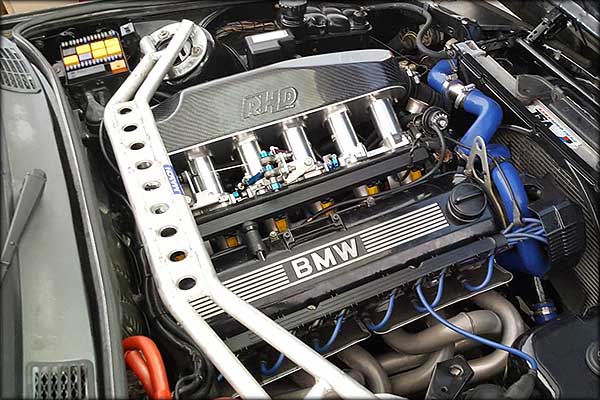Checking Out the Performance Enhancements of the most recent BMW Engine Designs
Checking Out the Performance Enhancements of the most recent BMW Engine Designs
Blog Article
Exploring the Development of Combustion Engines in Modern Transportation Solutions
As we navigate the landscape of modern-day transport, the evolution of burning engines stands as a testimony to human ingenuity and design expertise. The interplay of background, innovation, and environmental concerns in forming the trajectory of combustion engines creates a story that is both compelling and informative.
Very Early Beginnings of Combustion Engines
Just how did the idea of burning engines very first emerge in the onset of transport advancement? The roots of burning engines can be traced back to the 17th century when the concepts of interior burning were first discovered. In 1673, Christian Huygens conceptualized a standard interior burning engine that utilized gunpowder to create power. It had not been up until the late 19th century that useful applications of burning engines in transportation began to emerge.
The innovation minute included the creation of the very first successful gasoline-powered engine by Karl Benz in 1885 - bmw engine. This engine paved the means for the advancement of the contemporary automobile, changing transportation systems worldwide. Succeeding developments by Nikolaus Otto and Gottlieb Daimler further refined combustion engine innovation, leading to the mass production of autos and the rapid expansion of the transport sector
These very early combustion engines were defined by their simplicity and effectiveness, laying the foundation for the complicated and powerful engines used in modern transportation systems. The evolution of burning engines has actually been crucial fit the means we take a trip and deliver items, noting a considerable turning point in the history of transportation development.
Transition to Internal Burning Modern Technology
The change to interior combustion technology noted a crucial change in the evolution of transportation systems. This change started in the late 19th century, with innovators like Nikolaus Otto and Gottlieb Daimler establishing the first effective interior combustion engines. These engines transformed transportation by supplying a much more effective and effective option to heavy steam engines and electrical motors.
One of the key advantages of inner combustion engines was their capacity to be reduced to match lorries, bring about the advancement of vehicles and motorbikes. This shift from cumbersome, stationary engines to portable, mobile ones paved the means for the contemporary transport systems we see today.
The shift to inner combustion technology likewise stimulated improvements in fuel innovation, leading to the advancement of gasoline and diesel as main gas sources for lorries. This shift not just made transport much more accessible to the masses however additionally laid the foundation for the oil and gas market to come to be essential to international economies.
Effect of Combustion Engines on Transportation
The adoption of burning engines in transport systems catalyzed an extensive change in the efficiency and speed of worldwide mobility. Combustion engines reinvented transport by providing a flexible and trustworthy resource of power for various automobiles, consisting of cars, planes, vehicles, and ships. This advancement significantly improved the capability for items and people to conform fars away in much shorter amount of time, bring about increased connectivity in between regions and nations.
Moreover, the widespread use burning engines has actually had a substantial effect on financial growth. The ability to deliver products effectively has actually spurred trade and commerce, enabling companies to increase their markets and get to customers worldwide. This has actually assisted in financial growth and globalization, as products can now be carried quicker and in larger quantities than ever.
Nevertheless, the environmental impact of combustion engines can not be neglected. The look at this now combustion of fossil fuels has led to air contamination and greenhouse gas emissions, contributing to environment adjustment and presenting wellness threats to populaces. bmw engine. Consequently, there is a growing emphasis on creating different propulsion innovations to reduce these negative effects and develop a much more sustainable future for transportation
Innovations in Burning Engine Style
One significant advancement is the growth of turbocharged engines, which make use of exhaust gases to drive a generator that presses inbound air, enabling for more fuel to be scorched, resulting in enhanced power outcome without a considerable boost in engine size. Variable valve timing systems have additionally changed engine layout by maximizing air flow at different engine speeds, boosting both power and performance. These advancements collectively contribute to the continual renovation of combustion engines in modern transport systems.
Future Fads in Combustion Engine Development
With modern technology developments driving continual development, the future of burning engine development is positioned to revolutionize transport systems worldwide. One of the key patterns in combustion engine advancement is the press in the direction of greater performance and decreased emissions.
One more popular fad is the adoption of hybrid innovations in burning engines. Crossbreed engines integrate standard combustion innovation with electrical power, offering enhanced gas performance and lower discharges. As the auto industry shifts in the direction of electrification, crossbreed combustion engines are seen as a transitional remedy that bridges the space in between standard automobiles and completely electric ones.
Moreover, the assimilation of smart innovations, such as expert system and data analytics, is anticipated to play a significant role in the future of burning engine development. These technologies can maximize engine performance in real-time, causing extra reliable burning procedures and boosted total lorry efficiency. Welcoming these future fads will certainly not just drive advancement in burning engine advancement however likewise contribute to a more eco pleasant and lasting transportation environment.

Conclusion
To conclude, the development of combustion engines in contemporary transportation systems has been marked by considerable improvements in modern technology and layout. From the very early starts of burning engines to the shift to interior combustion innovation, these engines have had a profound influence on transportation. Innovations in burning engine layout proceed to drive progression in this area, with future patterns concentrating on further improving performance and lowering exhausts. The future of burning engines in transport looks appealing look at this web-site as research and development initiatives remain to press limits.
The roots of combustion engines can be mapped back to the 17th century when the principles of inner combustion were first explored. These engines reinvented transportation by offering an extra effective and effective option to steam engines and electrical motors.

Report this page